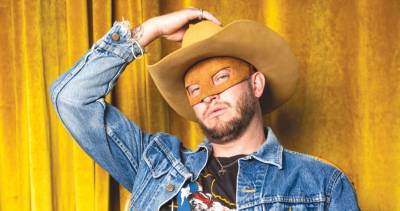Breakout Dancer: Livona Ellis’ magnetism of movement
The Breakouts are presented in partnership with Kwantlen Polytechnic University.
Where change tends to be scary for most of us, dancer and choreographer Livona Ellis sees it as absolutely essential—something to be embraced if one is to move forward in life.
“I’ve always been the kind of person that needs a big push to get myself to try things that I wouldn’t do,” Ellis says. “I have to put myself in a situation where I have to adapt quickly and see what comes out. But this push has been less scary, and maybe more exciting as I’ve kind of been wanting to shift for a while.”
The self-orchestrated push in this case was her decision to leave dance powerhouse Ballet BC last year following a run of more than a decade. After coming out of the Arts Umbrella program, Ellis joined the company in 2010, establishing herself as both a dedicated team player when necessary, and a magnetic standout in productions like Schachmatt from Spain’s Cayetano Soto and GARDEN by Medhi Walerski.
Along the way, Ellis was also creating pieces for the likes of Dances for a Small Stage, the Contemporary Art Gallery, Arts Umbrella, and Dance Deck. Major career highlights have included a 2021 Louise Bentall Award for Fortress: a duo with Rebecca Margolick that continues to evolve; the expanded work showcased at a recent performance at Left of PuSh.
https://www.instagram.com/p/B0rEXBzgtKA/?hl=en
“We took some risks, but we’re happy with where we’re going with it,” Ellis says with a laugh. “A lot happens in two years. I feel like I’ve grown a lot as a person—as an artist, my interests have changed. I’m a different creator now.”
Helping Ellis navigate this new phase of her career has been Crystal Pite’s boundary-exploding Kidd Pivot company, which, already a massive fan of, Ellis joined after leaving Ballet BC.
“I’ve been watching Crystal’s work since I was a child, and seen the evolution of it,” says Ellis, who appeared in Kidd Pivot’s epic Assembly Hall. “Being able to experience that world from the inside while I develop my own choreographic voice has been eye-opening. Just to see how she works with her team, and with her dancers, and how she develops her ideas. I feel like I’ve gained some skills not only as a performer and an artist, but as a choreographer.”
As Ellis also concentrates on building a career as an independent choreographer, the goal, not surprisingly, is to continue to push herself. One of the things she’s currently working on is a production that fuses opera with modern dance—two forms that traditionally don’t have a lot in common.
“It’s a different realm,” Ellis offers. “I’ve always been driven by music, so it’s really exciting for me to approach choreography with a really heavy music drive. And I’m not working with dancers, so it’s forcing me to go, ‘Okay, these are singers—how can I play to their strengths? What, as a choreographer, are the movements that will distill what’s happening in the scene and the music?’ It’s a challenge, but I’m really excited about it.”















Comments